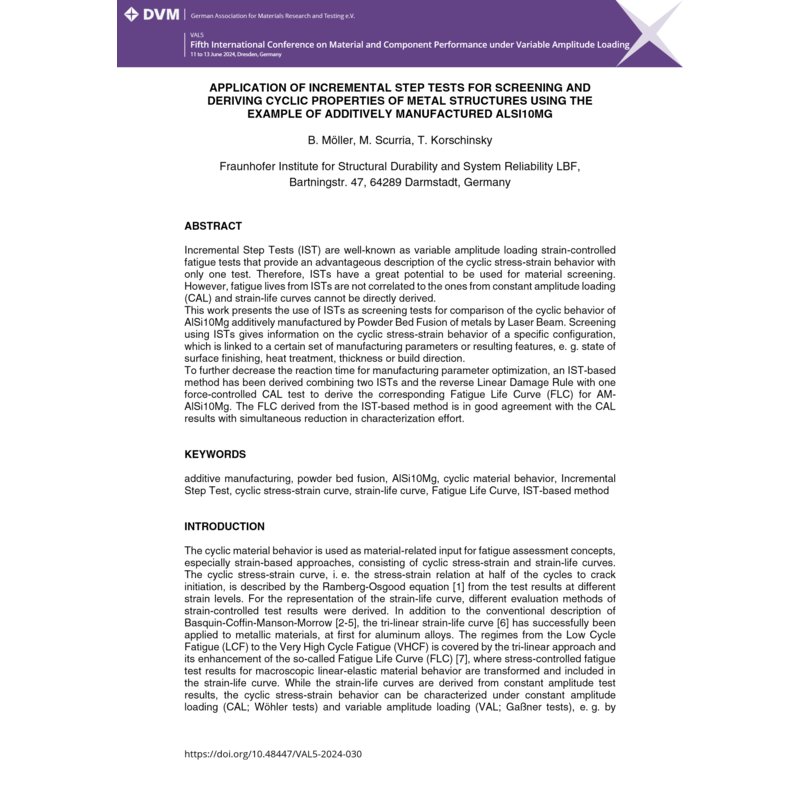- Online only



Incremental Step Tests (IST) [1] are well-known as variable amplitude loading strain-controlled fatigue tests that provide a full description of the cyclic stress-strain behavior in addition to monotonic tensile loading curves with only one test. Therefore, ISTs have a great potential to be used for material screening and to reduce the effort in deriving fatigue properties, which are presented as Wöhler- or Gaßner-lines, for example. However, fatigue lives from ISTs are not correlated to the ones from constant amplitude loading (CAL; Wöhler tests) and strain-life curves cannot be directly derived.
This work presents the use of ISTs as screening test for comparison of the cyclic behavior of additively manufactured (AMed) metallic structures focusing on Powder Bed Fusion –…

Datenschutzbedingungen (bearbeiten im Modul "Kundenvorteile")

Lieferbedingungen (bearbeiten im Modul "Kundenvorteile")

Rücksendebedingungen (bearbeiten im Modul "Kundenvorteile")
Incremental Step Tests (IST) [1] are well-known as variable amplitude loading strain-controlled fatigue tests that provide a full description of the cyclic stress-strain behavior in addition to monotonic tensile loading curves with only one test. Therefore, ISTs have a great potential to be used for material screening and to reduce the effort in deriving fatigue properties, which are presented as Wöhler- or Gaßner-lines, for example. However, fatigue lives from ISTs are not correlated to the ones from constant amplitude loading (CAL; Wöhler tests) and strain-life curves cannot be directly derived.
This work presents the use of ISTs as screening test for comparison of the cyclic behavior of additively manufactured (AMed) metallic structures focusing on Powder Bed Fusion – Laser Beam / metallic (PBF-LB/M) of AlSi10Mg. Motivation for this screening is given by the lack of knowledge for this comparatively new manufacturing process and large number of process parameters and influences on the cyclic structural behavior. Therefore, a screening using ISTs gives a first information on the fatigue performance of a specific configuration. The configuration might be linked to a certain set of manufacturing parameters, but also relate to the resulting effects of internal defects, state of surface finishing, heat treatment or even the location and orientation within the building chamber. The resulting cyclic structural behavior which depends on the distribution and size of pores as well as the surface conditions, can be derived from ISTs and help to understand the influence und interaction of process parameters and build orientation under service loading.
In order to further decrease the reaction time within the process of manufacturing parameter optimization, a method [2] has been derived combining ISTs with CAL force-controlled tests to derive the corresponding strain-life curves or Fatigue Life Curves [3] of AlSi10Mg AMed aluminum structures, for the first time. In this method, two ISTs, one CAL force-controlled test and the cumulative damage according to the Palmgren-Miner’s rule [4, 5] are used to derive a continuous S-N curve from the LCF to the VHCF regime with respect to the cyclic material behavior.